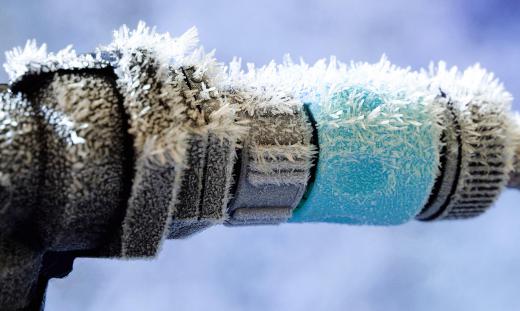A heat gun is tool that emits a stream of hot air. It is similar in appearance and construction to a hair dryer, but the air it emits is at a much higher temperature. Air is forced over the element and heated. Typically, the air emitted can reach temperatures between 200° and 1,000° Fahrenheit (93° to 537.7° Celsius).
A heat gun can be used in a variety of construction applications. It can be used for drying, heating, welding, and shrinking. Practical applications of a heat gun include drying and stripping paint, drying damp wood, softening adhesives for tile removal, and thawing frozen pipes.

The most common use for a heat gun is to remove paint. When using the tool for this purpose, the gun should be guided in a slow, circular motion over the painted area. The gun should never be aimed in one place for more than 10 seconds, because the hot air can scorch the material under the paint and cause a fire. When the paint begins to bubble, it can simply be scraped off with a putty knife.
When a heat gun is used for paint removal, the operator should always wear safety glasses and a respirator mask. The fumes that come from heated paint are very harmful. For the same reason, the gun should never be used on lead-based paint.
A heat gun can also be used in electronics for desoldering purposes. Electronic components are typically soldered to a circuit board. These components may have to be removed for repair purposes or for salvaging in a desoldering process.
To desolder an electronic component from a circuit board, the stream of air is aimed at the component that will be removed. When the soldering material is melted, the component can be pulled free. Toxic fumes may be released during this process, so it is important that the tool is used in a well-ventilated area. The tool operator should also be careful not to damage the electronic components with the heated air.
The high operating temperatures of a heat gun mean that there are several safety factors that should be considered during its operation. The work area should be kept clear of flammable materials. Wood shavings and paper should be cleared from the area, and long hair should be tied back and jewelry should be removed. The heat gun nozzle should never be pressed directly against a surface. Immediately after using the heat gun, it should be kept away from clothing and skin because its surface may be extremely hot.
